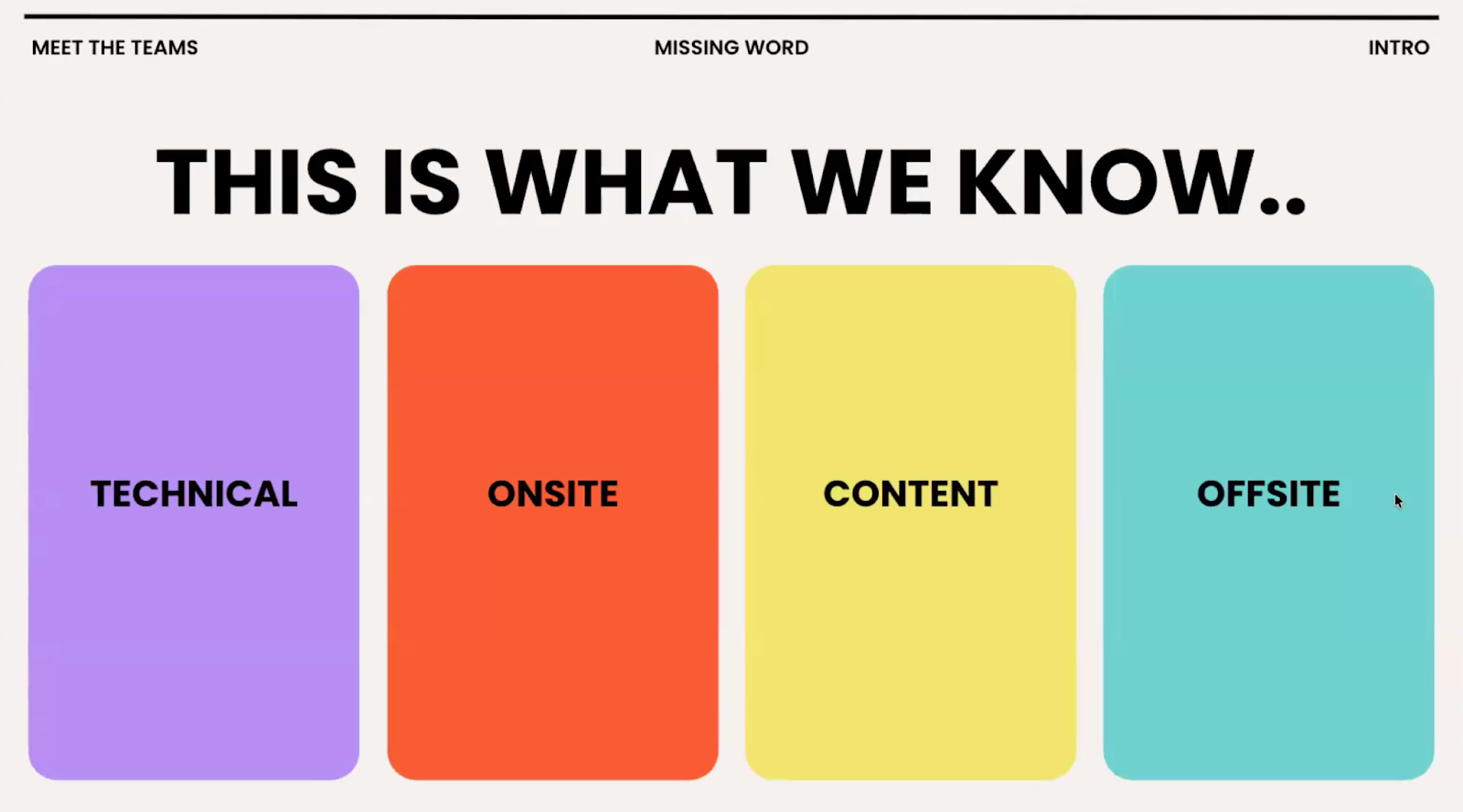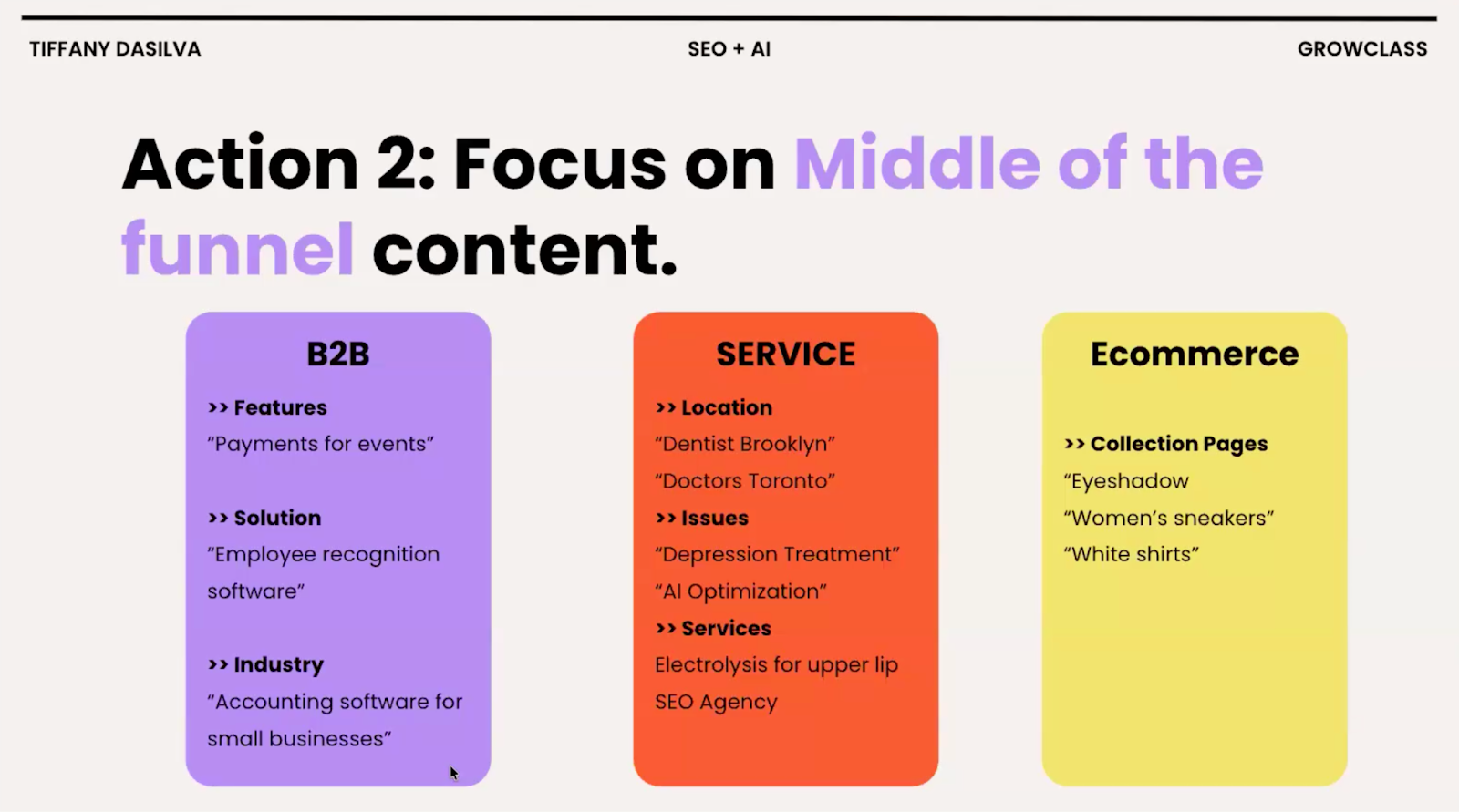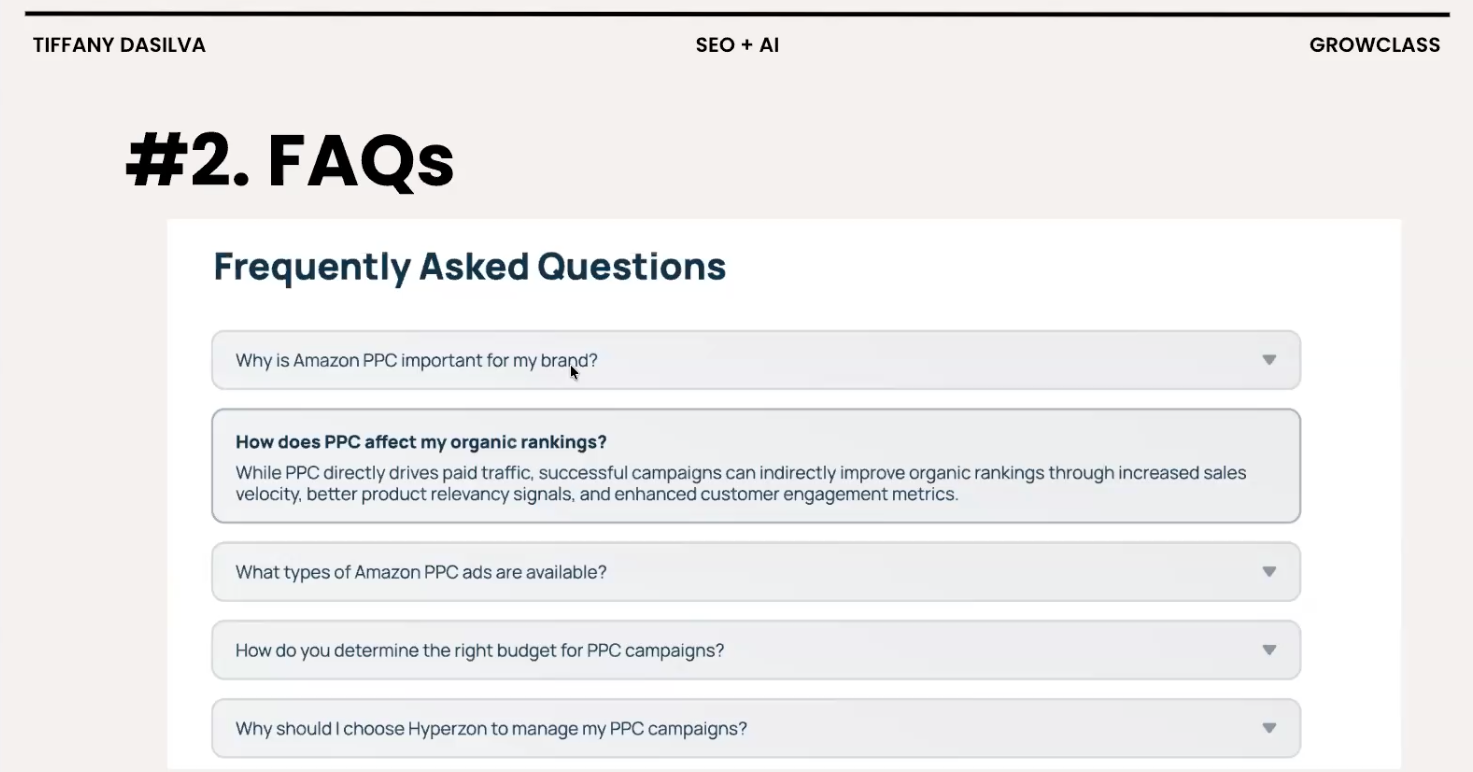“Email marketing is dead.”
“SMS is dead.”
Pick literally any marketing channel, and someone’s already called the time of death. Now it’s SEO’s turn.
Give me a break.
SEO isn’t dead. People are still Googling, and large language models (LLMs) like ChatGPT, Claude, and Perplexity are crawling those same search results to decide what to show, cite, and link to. But, it is getting a reboot.
Despite what we want to believe, AI overviews are eating into a lot of traffic. And marketers who ignore AI risk losing brand visibility in both search results and AI-generated summaries.
The good news?
You can counter these shifts with strong SEO fundamentals and a few smart strategy tweaks. At the recent Growclass AI Summit, marketing practitioners and strategists shared what’s real and what’s just hype. In this roundup, we’re diving into insights from Tiffany DaSilva, SEO expert, Growclass instructor, and Flowjo founder, on how AI is reshaping search and what you can do to stay visible.
The four core pillars of SEO still apply today
The first thing Tiffany immediately dispels is the idea that AI has made SEO irrelevant. Just because AI tools are changing how content is found doesn’t mean you should throw SEO strategy out the window.
To explain it, Tiffany uses a simple metaphor: SEO is like building a house. 🏠

- Technical SEO is the foundation. You need to make sure search engines can see your website and retrieve its content. If they can’t, nothing else matters, because your content can’t be found.
- On-site SEO is the structure—the walls, doors, and windows. These include your title tags, meta descriptions, H1 headers, keywords, and internal links. They help both humans and bots navigate.
- Content is the décor and personality. It’s what makes your site feel human, trustworthy, and worth sticking around for.
- Off-site SEO is the housewarming party. These are the backlinks, mentions, and social proof that show you’re respected beyond your own site.
In short, the core SEO buckets are still standing, and they’re more important than ever!
Evolving your content strategy for the AI era
Tiffany didn’t mince words: top-of-funnel blog content is being "eaten alive" by AI overviews. Informational queries like “What is X?” are now answered directly in search results or scraped into tools like ChatGPT and Copilot—with little to no traffic coming back to your site.
That means those big educational blog libraries? They're no longer the growth engines they once were.
So what should you focus on instead?
Middle and bottom-of-funnel (MOFU/BOFU) content. This is the stuff AI can't easily regurgitate:
- Solution pages (e.g. employee recognition software)
- Industry pages (e.g. accounting software for small businesses)
- Collection pages for e-commerce (e.g. best skateboarding gear in Canada)

These pages should be rich with:
- Social proof (quotes, reviews, case studies)
- Real data and performance metrics
- Clear summaries and structured formatting
- Unique human POVs and frameworks
- Author bios to support Google’s EEAT (Experience, Expertise, Authority, Trust)
💡 Tiff’s pro tip: Rework old blogs to add data, human POVs, and author credibility. Avoid generic content that AI has already absorbed.
Technical SEO still matters… A lot!
You also shouldn't forget the technical side of SEO. As Tiffany puts it, technical SEO is still the foundation of your house. We really don’t want any cracks there!
“There are two things that you want to make sure are happening when you're looking at the technical foundation of your website: can a search engine see your website? And can it retrieve what it finds?”
– Tiffany DaSilva
The same goes for large language models. If ChatGPT or Claude can’t find or interpret your pages, you’ll miss out on AI mentions, citations, and traffic.
Here’s where to focus:
- Visibility: Use the AI Brand and Product Visibility tool by Aleyda Solis to check how LLMs perceive your brand. It scans how your company shows up in AI answers and gives you prompts to improve. You might find that AI doesn’t recognize your site at all, or that it’s describing you inaccurately. That’s a signal to step up your structured data, clarity, and presence in third-party sources.
- Speed: Use Google’s PageSpeed Insights to make sure your site loads quickly. As Tiff said, “If ChatGPT is going to go through your information, it has to be able to do it quickly. It can't time out.”
- JavaScript: JavaScript is the code that powers dynamic or interactive parts of your website, like drop-downs and animations. The issues? LLMs and even Google can struggle to read content hidden inside it. To check what’s actually visible, Tiffany recommends a tool called View Rendered Source. It shows the difference between what’s in your site’s raw code and what gets displayed after JavaScript runs. If there’s a big mismatch, especially in content like headings or pricing, that’s a red flag.
- Schema (structured data): Schema is like a cheat sheet for AI. In Tiffany’s words, “LLMs are lazy as hell”—they scan for the clearest, easiest signals to figure out what matters on your page. Schema helps by marking up key info like FAQs, products, and reviews directly in your site’s code. You can generate it with tools like Yoast, Google’s Structured Data Markup Helper, or even ChatGPT. Not sure if your site has a schema? Use the SEO Pro Extension to check. If it’s blank, that’s your cue to act fast.
On-site SEO: Your metadata and FAQs matter more than ever
Having a technically sound site is half the battle. The other half is making sure your content is structured in a way that helps both humans and AI understand it quickly and clearly. And that’s where you need to focus on on-site SEO—the walls and roof of your house.
Title tags, meta descriptions, and H1s
Many marketers used to treat meta descriptions as optional. Now they’re essential. Tools like ChatGPT and Perplexity read them as context, and may even quote them directly in AI-generated answers.
Tiff emphasized that LLMs look for the clearest, easiest signals—and your meta description is one of the first things they grab. If it’s missing or vague, AI might misunderstand (or ignore) your page.
Take the time to write clear, helpful descriptions that reflect what’s actually on the page. Use natural language that mirrors how someone might ask for your product or service. You’ll improve both visibility and click-throughs.
FAQs are a goldmine
There’s also much more weight you should give to FAQs, as they’re now one of the best ways to feed LLMs the information they’re looking for. They mimic the kind of conversational queries people type into AI tools, such as “What’s the best email marketing tool for small teams?”
Tiffany recommends adding relevant FAQs to every key page of your site:
- Product
- Solution
- Service

A great way to source FAQs to include in an article:
- Run a Google Search of your target keyword. What questions appear in the “People Also Ask” section of the SERP? Are any relevant to your audience or piece?
- Run your keyword through Perplexity. Scroll to the very bottom to see the next queries it suggests. Are any relevant to your audience?
- Use your knowledge. You know your customers inside and out. What questions do you think they would have?
💡 Pro tip: Format your FAQs clearly. You can hide them in accordions for a better user experience (UX), but make sure they’re still accessible in the code. On top of that, use the FAQ schema to make them machine-readable.
Off-site SEO: Links and mentions still rule
Off-page SEO has always been important, but now even more. Google has always used backlinks as a core signal of authority and popularity—and AI systems are following suit.
“Google ultimately is a popularity contest. We’re seeing ChatGPT and all of them—they’re popularity contests too. And one of the only ways that you can really tell how popular someone is, is by how much your brand is being talked about and how much it's being linked to. And since day one, since the first days of Google, links have always been the differentiator between Google and any other search engine. That’s what made it great. That’s what made it work. And so it’s something that will never go away.”
– Tiffany DaSilva
Interestingly, Tiffany pointed out that brand mentions, like social conversations, press coverage, and even conference talks, are becoming a growing trust signal for AI systems. It’s not just about who links to you anymore, but who’s talking about you.
So, how do you get your brand linked and mentioned? Tiffany recommends three plays:
- Volume play: Get your brand out there in as many places as possible, through guest posts, directories, and social bios.
- Authority play: Team up with others—run a joint webinar, get included in a roundup, or build something useful people want to link to.
- Brand equity play: Create something really valuable, like original research or an annual report, and let the links come to you.

And if that all sounds a bit intense, Tiffany’s the first to say—it doesn’t have to be that deep.
🎯 “You don’t need to be a PR genius—just consistent.”
– Tiffany DaSilva
Get your hands dirty: AI tools & frameworks to explore
Besides the tools we’ve already covered in the technical SEO section, there are a couple more worth exploring if you’re serious about understanding how AI sees your brand and how to optimize for it:
- GA4 Explore View – Use it to track “AI traffic” (visits from ChatGPT, Perplexity, and other AI-driven browsers or referrers).
- SEO platforms like Semrush or Ahrefs – Analyze keyword visibility, content structure, and topic relevance to see how well your pages align with AI-indexed knowledge.
- “The Invisible Web: What LLMs Miss (and Expose) on Your Site” by Jojo Furnival – A must-read for understanding how large language models interpret website structures and metadata.
- Reddit answers and community threads – Mine authentic customer pain points and phrasing to inform your FAQs and conversational content.
SEO is still ALIVE
AI hasn’t made SEO irrelevant. It’s made it more dynamic, more nuanced, and more important to get right. The marketers who’ll win aren’t the ones chasing hacks, but the ones rolling up their sleeves—experimenting, testing, and evolving with the tools and shifts at hand, just like Tiffany.
Want to dig deeper into how AI is reshaping marketing strategy? Check out the Growclass AI Guide or join our AI Marketing Strategy Certification to get practical, tactical, and a little nerdy 🤓 (in the best way).



